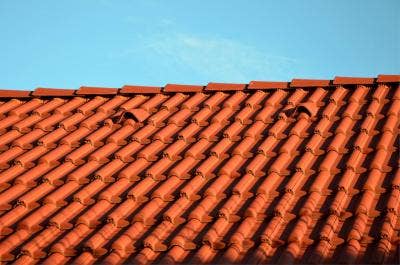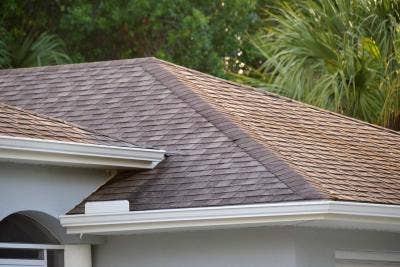4 Ways To Protect Your Roof This Winter
Protecting the roof of your house during winter can actually start at any time of the year. This is because while pre-winter checks are vital to make sure you have no leaks, broken tiles or other problems, periodic checks during the year can also head a problem off early.
Here are a few key areas to look at to be ready for the worst the weather has to offer.
Felt roofing
Felt roofing is the type usually found on extensions, particularly where the roof is flat, as well as on garden sheds and garages. The common format is for there to be two or three layers of felt sheets that work together to make an impregnable barrier. This is then finished with a waterproofing element, commonly bitumen, to make sure water doesn't get through.
Bitumen is a black material that keep water out but can become cracked or brittle in very cold temperatures. To combat this, an oil is added to make it more flexible and also tolerant to the cold. Unfortunately, there is no way to stop this oil evaporating over time, fence felt roofing a lifespan. In more recent times, two chemical additives have been put into the mixture to give a modified bitumen, sometimes called high tensile, and this has a greater lifespan again.
When it comes to winter preparations, it is always best to check the integrity of the waterproof covering before the worst of the weather comes. It is also an idea to check at intervals during the winter, particularly if the temperatures have reached exceptionally cold levels. Further, if there have been any high winds or storms it can also pay to inspect the roof and make sure no debris has broken the waterproof barrier, allowing water to get access.
Roof tiles
Roof tiles can be both easier to check and harder depending on where you live. If you can get enough distance from your house to do a visually inspection with a pair of binoculars you will be able to ensure that there are no problems. If not, it may be worth calling in someone with a ladder that can reach the roof and expertise to inspect it, especially if there have been storms and high winds since it was last inspected.
Any patches of moss that appear on the ground may also be a sign of a problem with roof tiles. The spots most commonly found to have problems are around vents and skylights as well as the chimney or roof stacks and these are the areas to pay particular attention to.

It is also possible to check the roof from the inside if you have good access to the loft. By going up there without any lights on, you will instantly see if there are any patches of daylight showing through that will indicate a problem.
Broken roof tiles aren't the only roof tile problem €“ dirty tiles can also be an issue. While accumulations of fauna, lichen, moss and algae may not sound a major issue, not only do they make the house look untidy, they can also stop roofing work by making the roof unsafe. This means if you do have a cracked or broken roof tile, a roofer may not be able to fix the problem because of the slippery and unsafe nature of the roof. Therefore, a regular clean by a roofer can stop this problem before it starts.
Other areas
It can be also worth checking guttering while the roof tiles are being inspected. Blocked guttering can be a problem due to leaves, moss and plants and this can mean that rainwater and snow run-off cannot escape the roof, as it should do. This can end up with either water overflowing at random places to the worst-case scenario where the guttering is ripped off the roof altogether.
Guttering doesn't need to be cleaned by a professional, provided you have sufficient confidence working at the heights required though some window cleaners may either offer the service or recommend someone that can. Remember that downpipes should also be checked during this process.
An inspection of fascia's and soffits is also advisable to check for holes, soft wood or rotting wood caused by water damage. These problems are often associated with guttering issues, so if you find one, you may well find the other.
Snow danger
Snow and ice are the principle causes of winter weather problems with snow build up and ice dams. Both of these are potentially serious problems that can lead to roof damage, guttering being torn off the roof and even damage to property below such as parked cars. One of the simplest ways to help avoid this problem is to have a long handled roof rake that means you can brush off some of the snow and stop the accumulation.

Ice dams are a little more complicated. An ice dam is a built-up of ice near the edge of the roof and when they become too large, can be difficult to deal with. They are generally caused by poor roof ventilation and a warm attic and tell-tale signs can be icicles. To stop ice dams occurring, proper ventilation in the loft is important and also reducing the direct sources of heat the area receives. If an ice dam does occur, calcium chloride is one way to remove it, though beware climbing ladders in these conditions, as this can be hazardous. It may be needed to call a professional removal company to solve the problem safely.
Conclusion
Being on or up near the roof can be very dangerous, so no matter what steps you take to protect your roof at winter, make sure you do it safely. If you are at all in doubt about your ability to do the task, call in a professional. Never take a chance that you may be involved in an accident if you can avoid it.
Our Top Videos.


How to install a Velux Integra Electric Roof Window (5 Parts)
In this five-part guide, we take you through the full installation of a Velux GGU Centre Pivot Integra Roof Window onto an...


How to install a Duratech Centre-Pivot Pine Roof Window
Once you begin unpackaging the window, you’ll find in the box the brackets, the handle and the fixings. And there will also be some instructions...
Ideas & Advice
How-tos, tutorials and videos


How and why to use or snap a chalk line
Chalk lines are the fastest way to mark straight guidelines on flat surfaces. They are used extensively in the building and construction industry to speedily and accurately ‘draw’ straight lines between two points. Chalk lines are inexpensive tools...


Skylight Blinds: A Guide To The Different Types
Like many household product, blinds for skylight windows come in all shapes, sizes, and materials. Some are designed with a tangible purpose in mind, while others are more for show. One thing’s for sure - buying any type of skylight blind...








